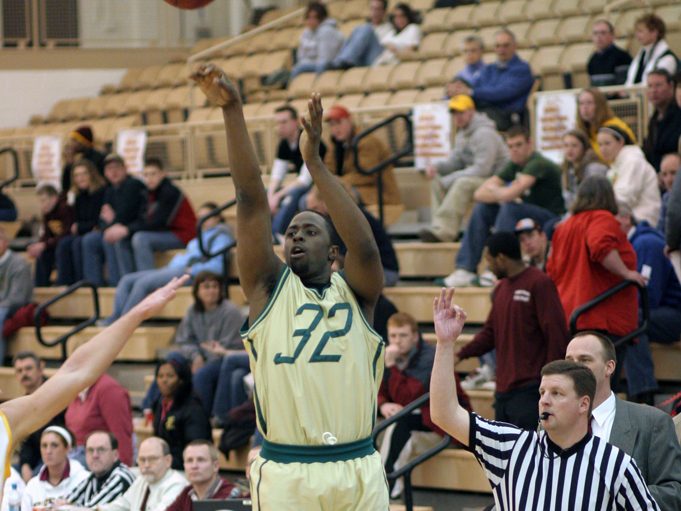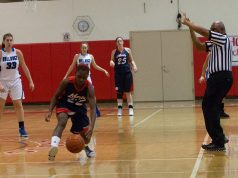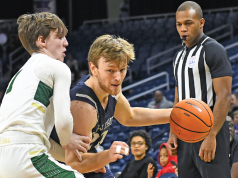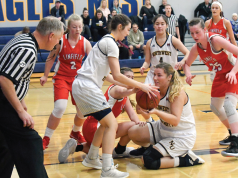Although we might not think of it this way, basketball crews have set plays, just like the teams they officiate. If they don’t, they should. The teams rely on the skills and athleticism of their players, but they resort to designed plays to fit specific situations — some pre-conceived and others drawn up for the moment. That goes for the referees, too.
One important example of that is coverage of the last shot in the period or game. Beyond calling fouls and violations as in any other situation, the last shot presents additional decisions to be made by the referees: Was the shot released in time? If there was a foul, was it before or after the buzzer sounded (NFHS)? Before or after time expired (NCAA or NFHS if a red/ LED light is used)? How will we verify any score?
It makes no sense to treat those decisions merely as additional things we hope to catch. The crew must have a well-thought-out approach to manage the situation and then have the discipline to follow the plan. What follows isn’t a prescription for how to cover buzzer beaters. It lets you know how my crew does it, which respects NFHS mechanics but illustrates our way of dealing with the pertinent issues.
First, we signal each other when we’re inside a minute to the end of the period because it’s easy to lose track of the exact time remaining if the action has been intense enough that the last shot is going to matter. Some crews touch their wrists or their chests to alert one another while others, like us, raise an index finger until they see the same signal returned by both partners. While some trainers frown on that as a signal that can be misconstrued by the timer, we find it easier to pick up through a scrum from the opposite side of the floor. Whatever is done, the purpose is to get the crew thinking about who will have responsibility for the last shot and be in the correct position when it is imminent.
Ninety-nine times out of 100, the trail opposite or center opposite the table will have the responsibility of ruling on the last shot (center official for NCAA women). That is, he or she will be the one to decide if the shot was released in time.
There is often debate about when, or even if, it’s still OK for the crew to rotate in the dying seconds. The concern is that the lead crossing the lane can force the trail or center to move when the latter is trying to lock down to get the best angle on the release of the shot. If that is the only concern, the chances of bad things happening are reduced if the crew agrees not to rotate within X seconds of the horn. A common number is the last 10 seconds; that’s long enough to give each crewmate time to settle again before the last shot. But it’s not so long that not rotating to on-ball coverage near the lane has much of a chance to fester.
Our only requirement is that the lead isn’t moving when the clock strikes zero because the trail or center should have been in position regardless of the lead’s movement.
So, what’s that position? If the ball is way across the floor, I only have to worry about judging when the buzzer sounds. If I’m also covering the shooter in my area, things become more interesting. I believe that the covering official should never rely on listening for the horn to determine whether the ball left the shooter’s hand before the clock hit 0:00. In a loud gymnasium, the horn may be tough to hear. In a large auditorium, the horn can be 100 feet from you, meaning it will take a fraction of a second for its sound to reach you after time expires. Most important, though, is that I don’t trust my anticipation of the sound to tell me when time has expired. I want to be in a position to see either the clock hitting zero in the background of my mental picture (or the red/ LED light) of the shooter releasing the ball. Either visual clue is more absolute, though the buzzer is king in NFHS. It’s also what the coach will be seeing through bloodshot eyes later when he replays the shot 15 times to see if I got it right.
That all means that if the ball’s out of my coverage area, I might move a considerable distance across the floor to get that picture. If the play is close to me, I might circle around the shooter from the best position — looking between defender and shooter — to behind somewhere where I can get the evidence.
That brings us to the other time in 100 I mentioned earlier: some gyms only have a clock at one end or on the wall opposite the table, and the center opposite or trail opposite the table has no hope of seeing both it and the shot. In those cases my crew will pass coverage off to the center or trail near the table. Our approach to coverage also explains why we’re less concerned about locking down rotations in the last 10 seconds because the center or trail will already be moving to an advantageous viewing position whether the lead has crossed the lane or not.
When the shooter prepares to release the shot, the covering official has to focus on any potential contact, primarily, and be aware of the buzzer or red/LED light or clock — in the background. When set up properly, I can easily decide the timeliness of the shot within about a tenth of a second either way. Less than that is anybody’s guess and you can only sell that you gave yourself every chance to get it right.
The official judging the last shot should blow the whistle and give the stop-time signal as soon as the ball becomes dead when time expires — the shot isn’t released in time or after the shot is clearly successful or missed. The whistle might be blown while the ball is in flight in cases such as a foul on or by the airborne shooter after the horn sounds, but the critical thing is that everyone knows by the official’s emphatic, immediate signal while turning away from the basket that a late shot isn’t going to count.
That’s another reason why the officials must be well-rehearsed in their coverage of the play. Any hesitation they have in making a ruling causes instant controversy because it insinuates a whole bunch of bad notions about them.
Despite all the planning, some last-second plays still are decided by a frog’s hair of difference. The shot might have been in time, but was it a two- or a three-pointer? Was the shooter fouled before or after the buzzer? Before or after he or she released the ball? Was the timer somehow slow starting the clock when the home team inbounded the ball with 2.4 seconds to play (another reason for the covering official to be looking at the clock)?
Because of those possibilities, and more, all three officials should focus on the last shot when it occurs. They should let the designated member call the shot but be prepared to step up with information to piece together the correct ruling when something goofy happens. Remember that once the crew is inside the dressing room, it’s too late for someone to pipe up with, “I was curious why you called it a three when her toe was on the line.” The officials should make mutual eye contact once the covering official has ruled. Three nods or thumbs up means to confirm the correct score and leave the gym, while the slightest glimmer of uncertainty means the crew should get together. Once they decide to stay and talk it over, they should take as long as necessary to compare observations and confirm the correct decision.
Ruling correctly on a buzzerbeater, when it determines the outcome of a game can be one of the toughest calls an official will have to make, but there’s no reason why it should be fraught with tension and second-guessing. Good preparation and a willingness by the crew to cover the play with discipline goes a long way to producing the correct outcome, but doesn’t guarantee it.
Set yourself up for success and be prepared to make that tough call.
What's Your Call? Leave a Comment:
Note: This article is archival in nature. Rules, interpretations, mechanics, philosophies and other information may or may not be correct for the current year.
This article is the copyright of ©Referee Enterprises, Inc., and may not be republished in whole or in part online, in print or in any capacity without expressed written permission from Referee. The article is made available for educational use by individuals.



















